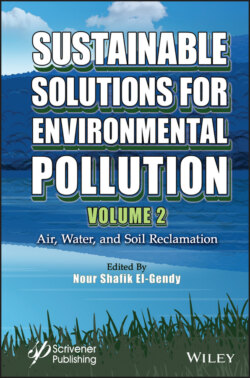Читать книгу Sustainable Solutions for Environmental Pollution, Volume 2 - Группа авторов - Страница 57
1.13.2 Vegetation Monitoring
ОглавлениеAquatic plants are an essential element of CW but the monitoring of their development (e.g., growth, senescence) is not easy, especially on large-scale systems. Accurate field surveys can be organized from the ground but there are time-consuming and labour-intensive. Very large systems cannot be monitored completely. Depending upon the water depth, some areas might not be accessible by boat. Recent progress in aerial imagery by UAS (i.e., aerial) can be a solution to these problems. UAS can be fitted with classical RGB cameras as well as more sophisticated sensors to cover the light spectrum down to NIR: they can detect free water areas, emerged as well as submerged aquatic plants (Chabot et al., 2017; Chabot et al., 2018). After calibration with ground sensors, an estimation of dissolved oxygen, turbidity (Wang et al., 2020a) or Chlorophyll-a (Gitelson et al., 2007) can also be provided. However, dedicated flights should be organized with licensed UAS pilots and under proper weather conditions (no rain and low wind). Furthermore, wildlife disturbance and even collisions with birds should be considered (Jarrett et al., 2020). Satellite images can also be used even if the spatial resolution is lower.
Saberioon et al. (2020) have successfully monitored Chlorophyll-a and total suspended solids in fishponds and sandpit lakes of various surfaces (tens to hundreds of hectares) and depths (from 2 m for fishponds to 10 m for sandpit lakes) using the Sentinel-2 constellation. The two Sentinel-2 satellites are working at high spatial resolution (10 to 60 m) with a revisit cycle of 5 days. Sentinel-2 satellites are fitted with a multi-spectral imager working with 13 bands (from visible to mid-infra-red) and provide a high temporal resolution series of images, if the sky is cloud-free (Saberioon et al., 2020). These images are freely available on the Copernicus-ESA website (https://scihub.copernicus.eu/).
In spite of its small size, the development of the vegetation in the 1.5-ha CW constructed downstream the St Just–St Nazaire de Pézan wastewater treatment plant (5,000 persons equivalent) in France can be monitored using the Sentinel-2 constellation true colour images (Figure 1.8).
The intensity of the green channel (560 nm) reflects the development of emerged and free-floating vegetation, as shown in Figure 1.9. It is a global assessment as the CW is composed of different zones (e.g., phytoplankton, reedbeds, or free-surface area) (pole-zhi.org, 2013). The vegetation starts to grow at the end of March and reaches its maximum (as monitored though the green channel) early June.
Figure 1.8 Sentinel-2 True colour images of the St Just–St Nazaire de Pézan CW in winter and summer 2020. The dash area corresponds to the CW.
Figure 1.9 Monitoring of vegetation on the St Just–St Nazaire de Pézan CW using Sentinel-2 satellite images. = green level, gray line = number of sun hours (Montpellier MeteoCiel (http://www.meteociel.fr/) station data). The dotted lines correspond to the satellite images shown in Figure 1.8.
In case of larger wetlands, more detailed analysis of the vegetation development can be done. The Tres Rios system, downstream a wastewater treatment plant in Phoenix (Arizona), is composed of several CWs (280-ha total area) (Figure 1.10). The western CW has an area of 42 ha. The vegetation is mainly composed of marshes along the shores. The open water depth varies between 1.5 and 2 m (Bois et al., 2017). The normalized difference vegetation index (NDVI) is one of the many descriptors available to track the live green vegetation in the marshed:
Figure 1.10 Sentinel-2 satellite view of the Tres Rios (Phoenix, Arizona) FSF-CW on September 4, 2020. The dashed area corresponds to the monitored fringing marshes.
Figure 1.11 Monitoring of Tres Rios fringing marshes using satellite images. = NDVI, black continuous line = maximal temperature, gray continuous line = minimal temperature (US National Centers for Environmental Information).
where Red and NIR stand for the spectral reflectance measurements acquired in the red (665 nm) and near-infrared (842 nm) regions, respectively. As the sky in Phoenix is often cloudless, the data rate is much higher than in the French example. According to the NDVI profile, the green vegetation starts to grow in February and the maximum occurs in September (Figure 1.11). This is a little later than the time of the maximal aboveground plant biomass (July), as recorded between 2012 and 2015 (Bois et al., 2017).
